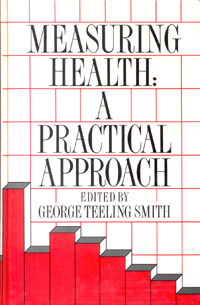Sign up to our newsletter Subscribe
Challenges and Solutions for Budget Impact Analysis of Gene Therapies

In Britain, the tax-payer pays the lion’s share of the national bill for medicines through the tax-supported NHS.
There can be no doubt that the supplier of this long list of compounds, new and old, the pharmaceutical industry, gets a bad press. I…
In Britain, the tax-payer pays the lion’s share of the national bill for medicines through the tax-supported NHS.
There can be no doubt that the supplier of this long list of compounds, new and old, the pharmaceutical industry, gets a bad press. I am personally persuaded that this is at least in part because today’s newspaper, radio and television producers, researchers, newscasters and programme people are generally young, attractive and healthy. Compared with older people, they have been well protected from illness and consequently have little appreciation of the contribution medicines now make to the quality of life of so many of our citizens. Doctors, whatever the public may be guided to think, are convinced about the therapeutic revolution and prescribe these very powerful substances and vigorously defend their rights to do so under their clinical freedom.
In the end, the catastrophic side-effects of a very small number—less than a score out of the thousands of compounds provided under the N HS—have themselves had some good side-effects. They have resulted in a drive to develop measures aimed at assessing the quality of life as part of clinical trials of new treatments. So an important by-product has also been the growing interest in assessing health, rather than disease. For far too long, doctors have been accused by their rivals in the market place—homoeopathists, acupuncturists and so on—of being completely dominated by the concepts of disease and treating patients with potentially dangerous chemically derived medicines. Indeed, this sort of idea has spilled over as a criticism of medical training programmes currently in use. I still get plenty of letters and remarks about the so-called but reviled ‘medical model’, which seems to be a belief that doctors do regard their patients as cases of diseases and categorize them as so, and then treat them by computer-directed regimens—a sad reflection of the profession’s willingness to accept modern technology and start to record clinical details in easily accessed computer data-banks!
So it is very apt that just at the moment Professor George Teeling Smith and his expert colleagues got together and now publish their discussions about how health professions can measure health, which is what the patients and their relatives naturally have become primarily interested in, now that we can treat effectively so many diseases which were masters of our bodies and fates in the recent past.
I therefore hope that this book will be very widely read, very widely discussed and that it will stimulate more work in this important field. I hope too that the dear public reader will recognize what it is all about—part of our reaching up for the best in medicine, therapeutics and health promotion generally.
Measuring Health: a Practical Approach
Teeling Smith, G. ed.
(1988) Measuring Health: a Practical Approach. OHE Monograph. Available from https://www.ohe.org/publications/measuring-health-practical-approach/
